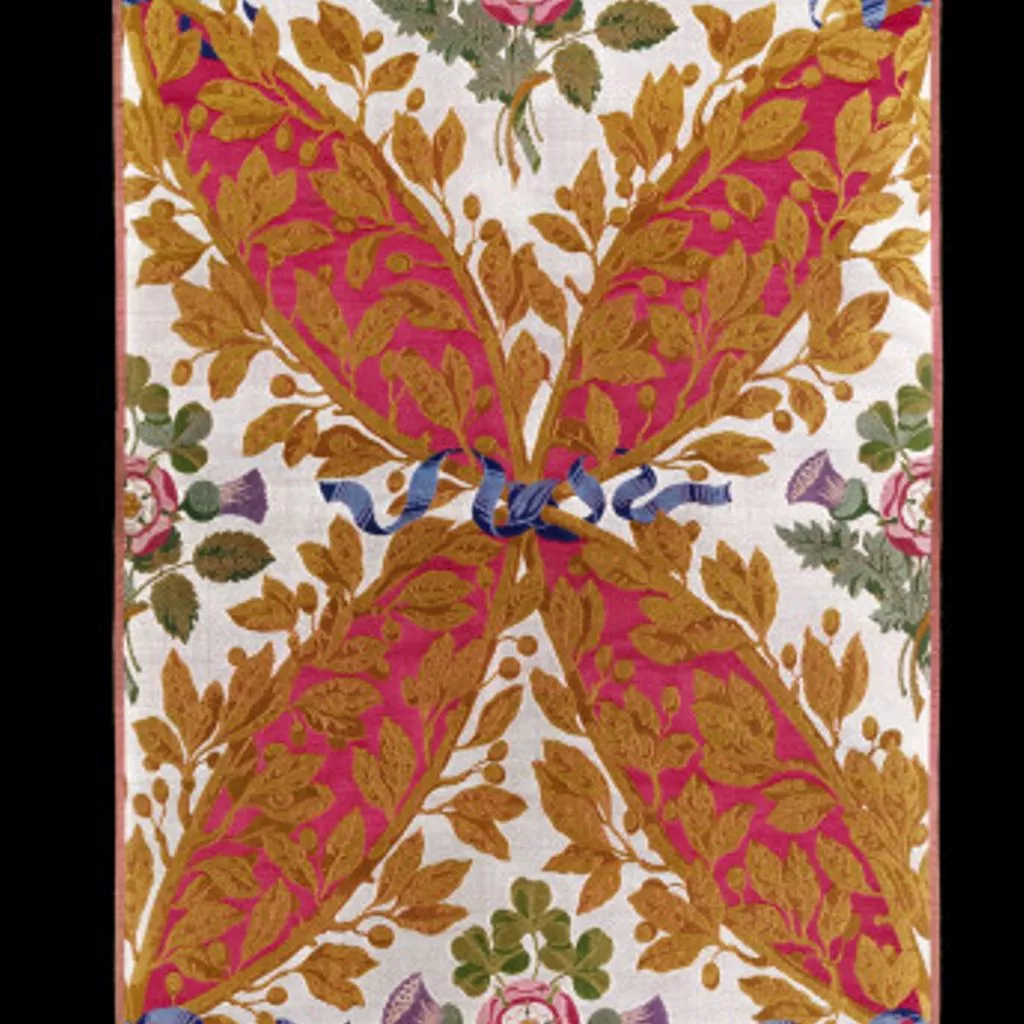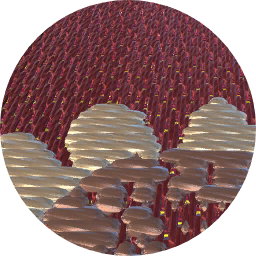Description
Furnishing fabric
British Galleries:
This is an example of a very high quality jacquard-woven fabric. It was selected in 1855 for a prestigious commission - the Ballroom at Buckingham Palace, London, the main royal residence. Prince Albert, who was always interested in new and revolutionary manufacturing methods, may have helped design this fabric. [27/03/2003]
Rose and Thistle
This high-quality woven silk was used to decorate the lower walls of the Ballroom, as part of a decorative scheme designed by Ludwig Gruner (1801-1882) and James Pennethorne (1801-1871), incorporating the national devices of England (Tudor rose), Scotland (thistle) and Ireland (shamrock). The silk was woven by Daniel Walters & Sons in Braintree in Essex who had been in business since 1820. By the mid-19th century the firm was recognised as the leading British silk manufacturers, and employed between 200 and 300 people. The firm produced silk furnishings for a number of important commissions, including Windsor Castle and Buckingham Palace. It was taken over by Warner & Sons in 1894.
In 1845 the House of Commons granted œ150,000 to enlarge Buckingham Palace, which was considered inadequate for royal entertaining. Between 1851 and 1856 a new suite of entertaining rooms was built on the south side of the Palace. This included a ballroom designed by Ludwig Gruner. Prince Albert had significant control over the scheme, which showed his interest in Raphael and Italianate design. The Queen's 'fine new room' was opened with a ball on 8 May 1856; both she and Prince Albert were delighted with it.






